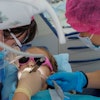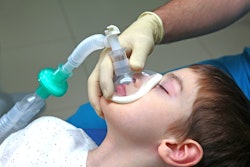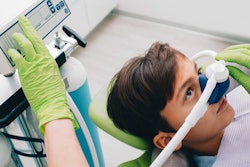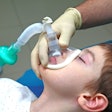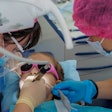The combination of dexmedetomidine and ketamine (DK) may reduce anxiety and pain in pediatric patients during sedation, according to a study published recently in the Journal of Evidence-Based Dental Practice.
However, this combination may not significantly impact sedation-related time factors, the authors wrote.
“Our findings indicate that while the DK offers certain advantages in terms of reducing anxiety and pain scores, it does not provide significant improvements in sedation onset, duration, or recovery times compared to dexmedetomidine alone,” wrote the authors, led by Ahmed Abdul Nader Abuokal of the Misr University for Science and Technology in Egypt (J Evid Based Dent Pract, April 18, 2025).
For this study, a systematic search was conducted to identify randomized controlled trials comparing DK with dexmedetomidine (D) alone. Five clinical trials published between 2015 and 2024 were included involving 308 pediatric patients ages 1 to 7, they wrote.
All studies featured double or triple blinding and focused on pediatric patients undergoing dental procedures such as outpatient surgeries and pulpectomies. Participants in all trials had documented American Society of Anesthesiologists status.
Meta-analysis revealed no significant difference between groups in onset of sedation time (mean difference [MD] = -0.02 minutes, 95% confidence interval [CI]: -3.27 to 3.23, p = 0.99, I² = 29%), duration of sedation (MD = -7.39 minutes, 95% CI: -21.69 to 6.91, p = 0.31, I² = 95%), or recovery time (MD = 4.71 minutes, 95% CI: -12.80 to 22.23, p = 0.60, I² = 92%), they wrote.
Anxiety scores significantly favored DK (SMD = -0.67, 95% CI: -1.20 to -0.14, p = 0.01, I² = 35%), as did pain scores (MD = -1.11, 95% CI: -2.04 to -0.19, p = 0.02, I² = 20%). No significant differences were found in adverse events, including bradycardia, hypotension, agitation, vomiting, or nausea. Overall, DK was more effective in reducing anxiety and pain without increasing adverse effects.
However, the review had limitations, including a small number of studies and inconsistent protocols, which may affect the generalizability of the results, the authors added.
“DK showed a moderate reduction in anxiety and pain with a favorable safety profile, suggesting it is a viable option in clinical practice,” they concluded.


